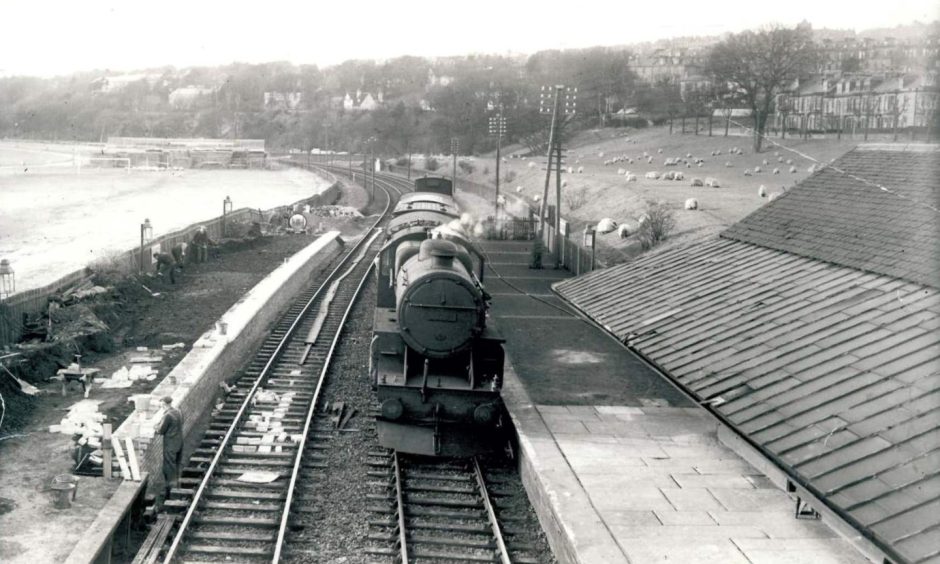
The scenic Magdalen Green is one of Dundee’s most familiar locations.
It was not always so quiet, for trains used to stop here.
Magdalen Green Station originally opened with the Tay Rail Bridge in June 1878 to serve the west end of Dundee on the Aberdeen to Glasgow line.
The station was where the surviving footbridge over the railway still stands.
Magdalen Green was the Broughty Ferry of the day.
David Henderson from Dundee highlighted the necessity for a passenger station at the general meeting of the Caledonian Railway Company in March 1876.
He said Tay Bridge Station could not accommodate the 25,000 people in the West End and suggested a new station to the west of Magdalen Green.
Mr Henderson said plenty of ground could be obtained at moderate cost.
He suggested increased traffic would repay the initial outlay and placing a station at Magdalen Green would be a “mine of wealth” for the Caledonian Railway.
The chairman said “it was in contemplation and would be attended to very soon”.
Magdalen Green Station opened on historic day for Dundee
The Evening Telegraph said there were two views on the subject.
It would be very convenient for West End residents but would “add to the annoyance” of the “already too numerous stoppages between Dundee and Perth”.
The plans were drawn up and agreement was signed in October 1877.
The two-platform station was completed in 1878 at the foot of Windsor Street.
Magdalen Green Station opened on Saturday June 1.
This was a historic day.
The Courier said: “We understand that the Caledonian Railway Company have decided to open the West End Station at the Magdalen Green on Saturday first.
“No more auspicious day of opening could be found than the day which at the same time opens the Tay Bridge and the summer season of the railway companies.”
The railway forged previously unimagined connections.
It quickly became a busy station.
In December 1879 the view changed forever.
The Tay Bridge collapsed and fell into the waters below.
It had stood for less than two years.
Work on the second bridge started in 1883.
Life went on.
A rival railway station opened across the road
Dundee Flower Show moved from Baxter Park to Magdalen Green in 1886 to accommodate the larger crowds which were attending the event.
Magdalen Green Station was conveniently located.
Of course, as Oscar Wilde said, imitation is the sincerest form of flattery.
Esplanade Station on the approaches of the Tay Bridge would later serve the same purpose for the rival North British Railway after opening in 1889.
Magdalen Green was also the site of Buffalo Bill’s Wild West Show in August 1904, which featured Annie Oakley in an “exhibition that has no counterpart”.
Transporting a troop of 800 people and 500 horses was no small feat.
The entire ensemble was hauled north to Magdalen Green on three massive trains.
The two shows a day over three days were visited by 74,000 people.
Special trains brought the public to Magdalen Green Station.
It was a popular place.
The outdoor swimming pool was situated south of Magdalen Green Station.
It was built in 1848 for £1,100 and was known as the “Coup”.
People would jump the railway fence to go swimming.
But tragedy struck in June 1906.
Seven-year-old grocer’s son Leslie Nicoll was struck by a train.
He was on his way to bathe in the pond with a number of other boys.
Assistance was forthcoming from Magdalen Green Station.
Leslie, however, died within a few minutes of the accident.
His body was carried to the waiting room at the station.
Station saw the arrival of a murder suspect
Charles White was a notorious arrival at Magdalen Green Station in March 1908.
White had been on the run for nine weeks after the killing of drinking buddy Patrick Cooney in his home at Ann Street with a bottle, a pair of tongs and a poker.
He was apprehended in Norwich and brought to Magdalen Green to avoid the crowds waiting at Dundee West before he was charged with murder at Bell Street.
White was found guilty of a reduced charge of culpable homicide.
He was jailed for 14 years.
Meanwhile, a runaway car came perilously close to disaster in September 1911.
The Courier said “something went wrong” and the driverless car “nearly knocked over Magdalen Green Station” after going downhill from Windsor Street.
“The decline is very steep, and, in a few moments, the vehicle had gained the speed of an express train.
“It whistled past lamppost after lamppost, missing them by the proverbial coat of paint.
“On the embankment at the foot of the hill, a man was enjoying an after-dinner nap.
“The whirr of the machinery wakened him from his beauty sleep, and, stretching himself hurriedly, he fairly skipped out of the way of the car.
“The motor made straight for the station.
“With a jolt and a jar it crashed into the railings, smashing several feet of it, knocking over a large advertisement board, and then dashing into the corner of the waiting room buildings.”
There were record crowds in 1949
The station was the scene of many family welcomes and partings, including West End men leaving to serve in the armed forces during the First World War.
Magdalen Green also won certificates in the best-kept station categories.
It almost went to the dogs in 1927.
The Town Council refused an application from a Glasgow promoter to establish the city’s first greyhound racing track next to Magdalen Green Station.
Horses and ponies did arrive, though.
There were jam-packed platforms with special trains running to take people to the Royal Highland Show at Riverside Park in 1933 and 1949.
The attendance of 163,917 in 1949 was the biggest in the show’s history.
Sheep grazing was once a familiar sight while waiting for the train.
Dundee Corporation used to permit animals to graze in parks across the city.
The railways were losing custom from passengers in the 1950s following rapid growth in car ownership and the post-war bus boom which expanded services.
A drastic reorganisation saw the closure of 30 stations to passenger traffic from Aberdeen to Glasgow including Glamis, Longforgan and Magdalen Green.
Magdalen Green shut completely on June 11 1956.
Was closure of Magdalen Green Station inevitable?
Kenneth Baxter, from the University of Dundee Archive Services, said the closure was intended to speed up services between Glasgow and Dundee.
“All the stations were considered to be highly uneconomic by British Railways and responsible for slow journey times,” he said.
“Had the station been given a reprieve in 1956, it probably would not have survived Dr Beeching’s cuts a few years later.
“Regular passenger numbers were too low, and it was too close to what is now Dundee Station.”
The platforms were ripped up.
The station buildings were pulled down afterwards.
It was gone but not forgotten.
The Bridgeview Station Café and Restaurant on Riverside Drive was modelled on the original blueprints of the former city train halt.
A nod to Magdalen Green’s very own locomotive past.
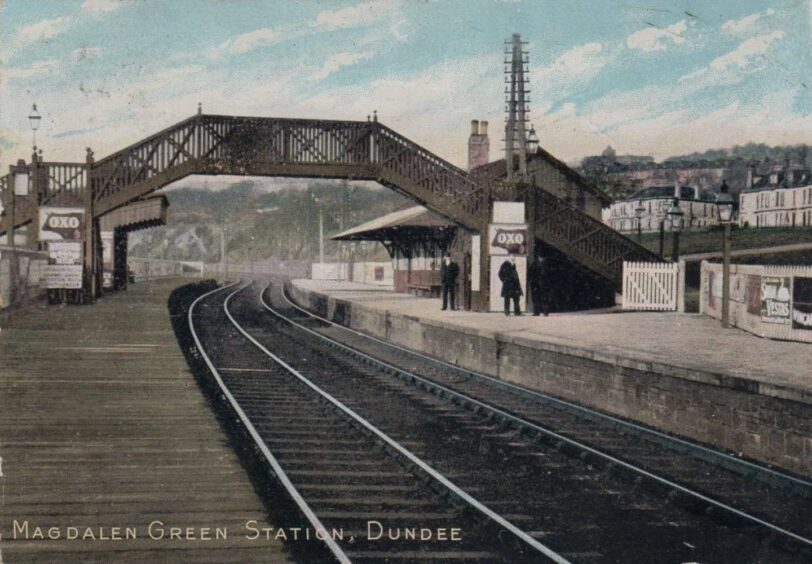
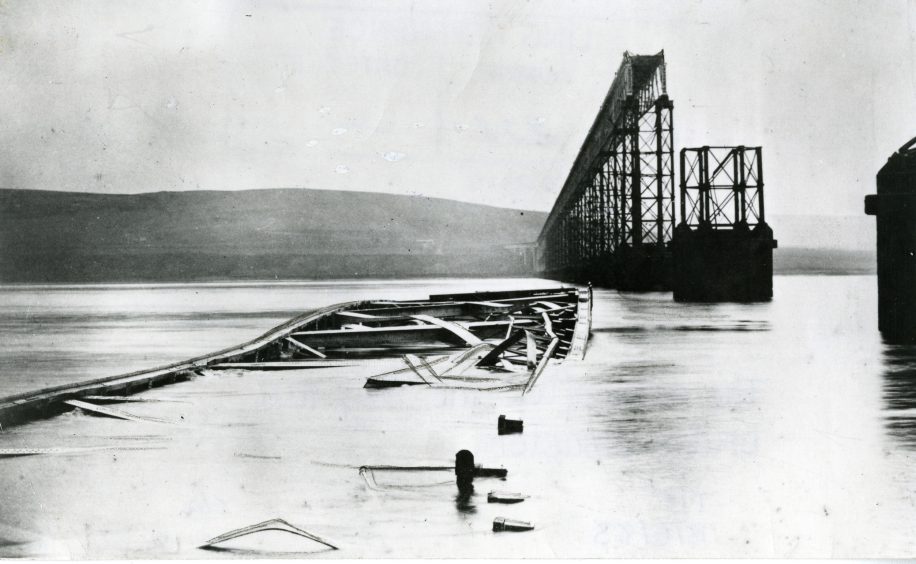
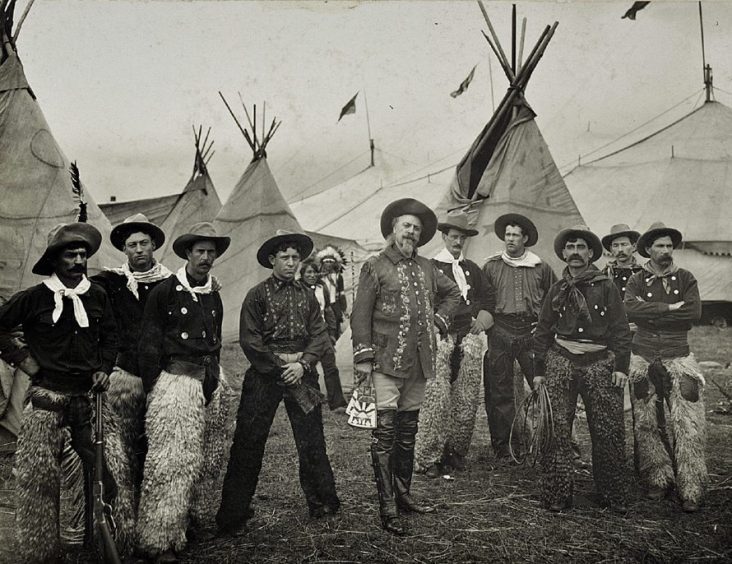
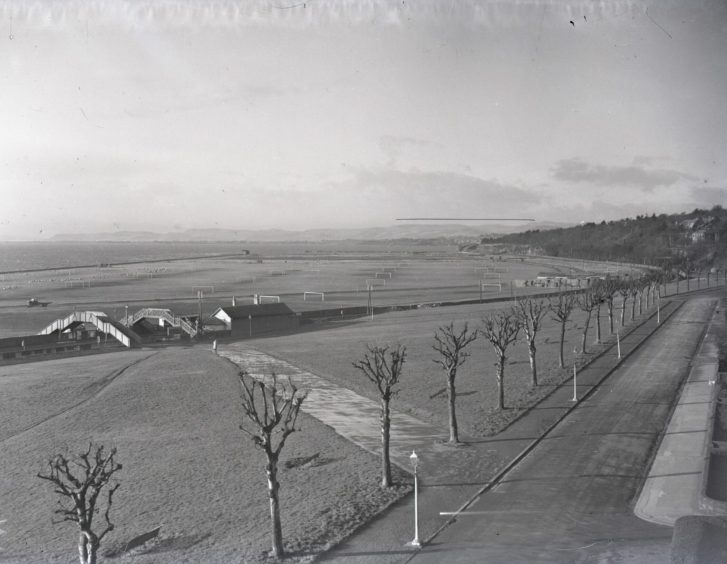
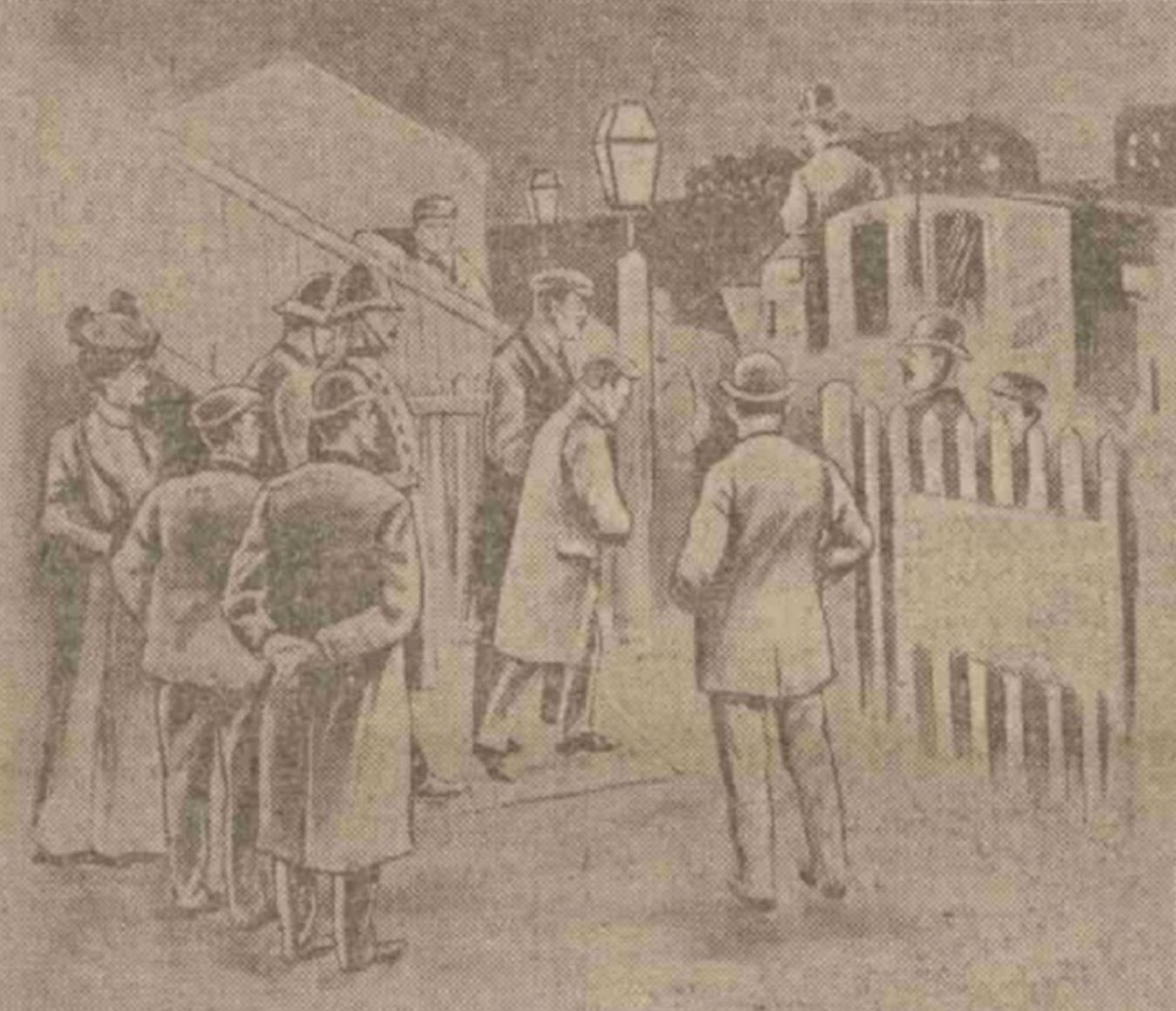
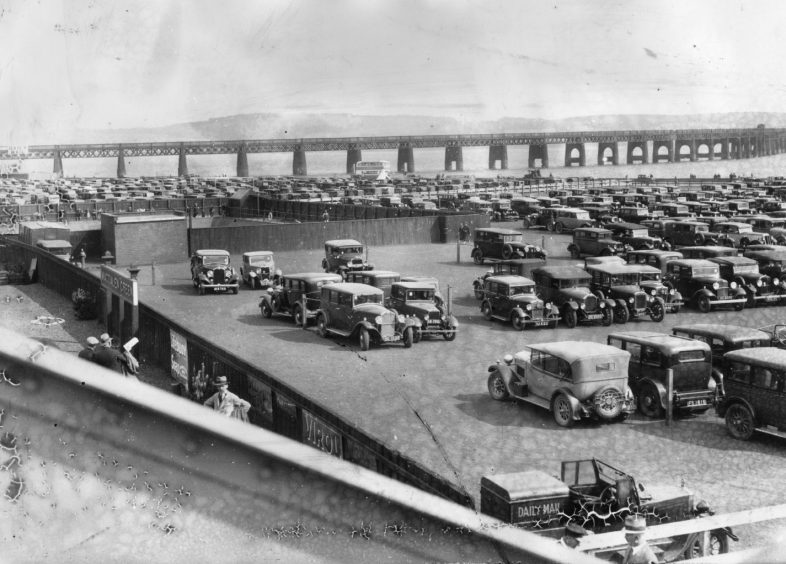
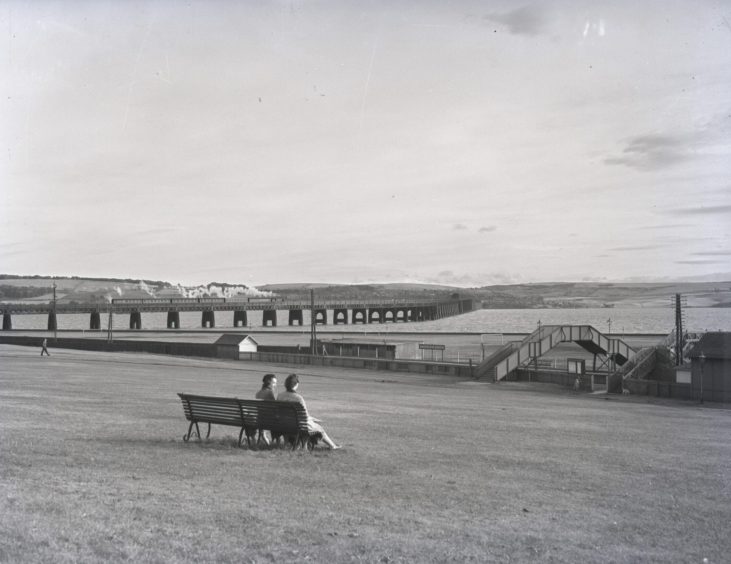
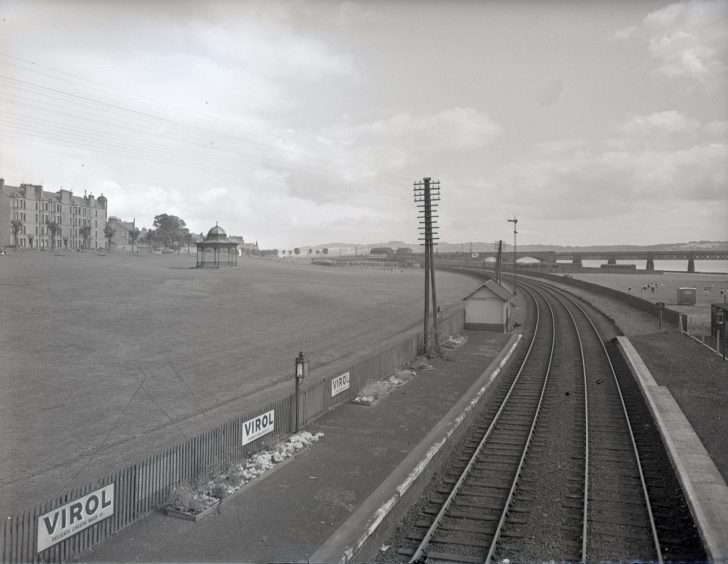
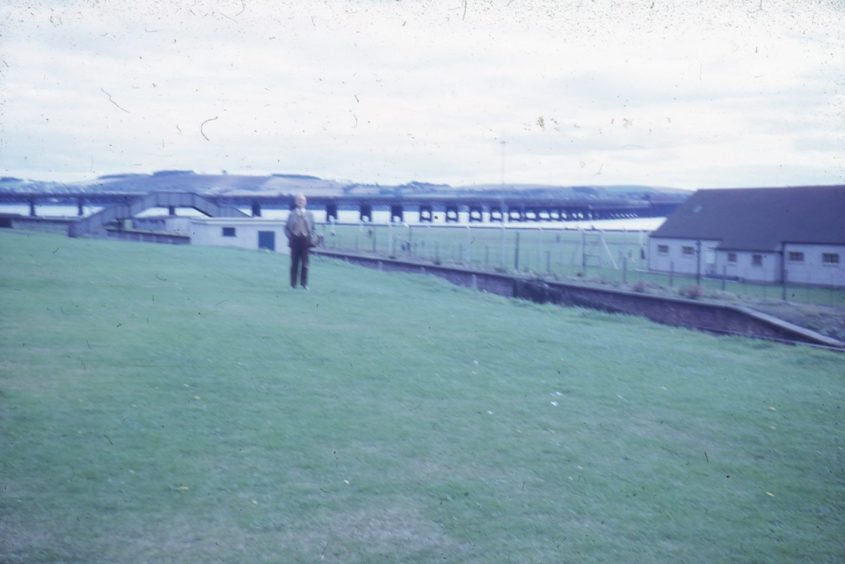










Conversation